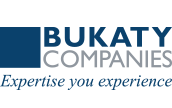Rising faster than both wages and the cost of living, drug prices continue to surge and a slowing-trend appears unlikely. The double-digit prescription drug increases now account for approximately 21% of total employer insurance benefits, according to the Kaiser Family Foundation. Employers and insurance carriers are aggressively searching for new ways to implement cost-containment efforts.
Plan sponsors and insurance carriers have traditionally used cost-containment strategies to target unnecessary expenses when it comes to specialty drugs.
Strategies may include:
- Tiered co-payment structures - increase employee share of the cost for high-priced specialty medications
- Formulary changes- encourage the use of alternative drugs with lower cost
- Use-management controls- requiring prior authorization before prescriptions can be filled
- Step therapy- mandates lower-cost drugs be tried before higher-cost alternatives
Employee engagement makes better consumers
Consumers have long known that generic versions of brand name drugs were a money-saving option, but costs also can vary widely depending on the retail outlet. Employers are arming employees with online tools that allow employees to compare prescription drug costs by retailers within the same zip code. The aim: save money for both the employee and the employer plan.
Carriers are now collaborating with vendors like GoodRx and RxSavings to provide online price comparison tools where consumers can find pharmacies to fill their prescriptions at the lowest price. Today, most carriers have a preferred vendor and these Rx comparison tools come at no additional cost to members.
As high-deductible health plans (HDHPs) paired with Health Savings Accounts (HSAs) become more common, these transparency tools are vital. While pre-tax HSA dollars can be used to pay for prescriptions, they are still considered out-of-pocket expenses until the deductible is met. Giving consumers the ability to shop and cost-compare prescriptions gives them a sense of control in an area where they are otherwise at the mercy of the marketplace.
To learn more, ask your Bukaty benefits consultant how you can implement these cost-saving tools and strategies into your health care program.

